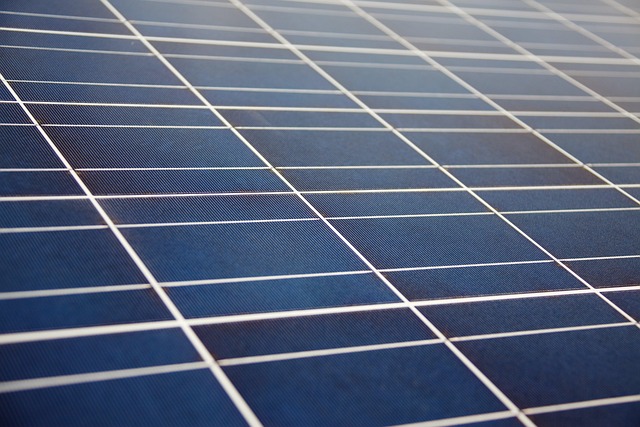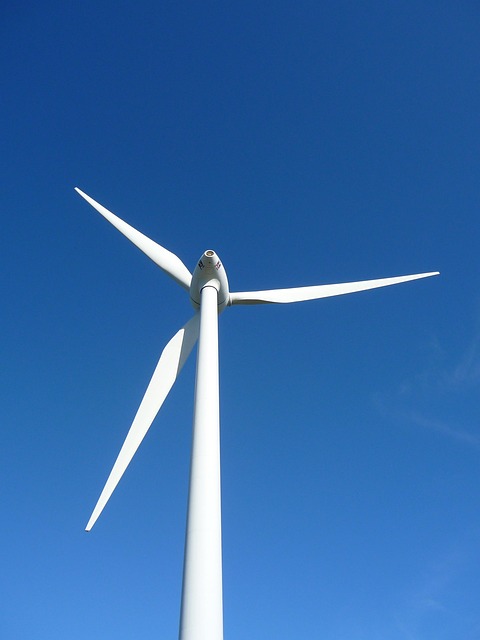
Beyond Fossil Fuels: The Transition to Clean Energy
The global energy landscape is undergoing a significant transformation as societies, industries, and governments strive to reduce their dependence on fossil fuels. With climate change posing one of the greatest challenges of our time, there is a growing recognition that transitioning to clean energy sources is essential for a sustainable future. This article explores the impetus behind the shift from fossil fuels to renewable energy, the technologies driving this transition, and the broader implications for society and the economy.
The Need for Transition
The reliance on fossil fuels has severe consequences for the environment, public health, and economic stability. Fossil fuel combustion is a major contributor to greenhouse gas emissions, which trap heat in the atmosphere and lead to global warming. According to the Intergovernmental Panel on Climate Change (IPCC), if current trends continue, average global temperatures could rise significantly by the end of the century, resulting in extreme weather events, rising sea levels, and detrimental impacts on biodiversity.
Beyond environmental concerns, fossil fuel extraction and consumption also pose health risks to communities worldwide. Air pollution from burning fossil fuels is linked to respiratory diseases, cardiovascular problems, and premature deaths. Furthermore, fossil fuel markets are highly susceptible to geopolitical tensions, which can lead to economic instability and energy insecurity.
Defining Clean Energy
Clean energy refers to energy derived from renewable, non-polluting sources, including solar, wind, hydropower, geothermal, and biomass. Unlike fossil fuels, which are finite and produce harmful emissions, clean energy sources offer the possibility for sustainable energy generation with a significantly reduced impact on the environment.
Solar Energy
Solar energy harnesses the power of the sun through photovoltaic cells or solar thermal technologies. It is one of the fastest-growing sectors in the clean energy market. Technologies have advanced to make solar panels more efficient and less expensive, enabling homeowners, businesses, and utilities to integrate solar power into their energy mix. Moreover, solar energy can be deployed at various scales — from small residential installations to large utility-scale solar farms.
Wind Energy
Wind energy captures the kinetic energy of moving air through turbines, converting it into electricity. Wind farms can be found both onshore and offshore, with offshore wind parks generating substantial amounts of energy due to stronger and more consistent winds. As with solar energy, advancements in turbine technology have increased efficiency and reduced costs, making wind power a cornerstone of the clean energy transition.
Hydropower
Hydropower utilizes flowing water to generate electricity. It is one of the oldest and most established forms of renewable energy. Large-scale hydropower plants typically involve dams, but smaller run-of-the-river systems are also gaining traction. However, while hydropower is a significant source of renewable energy, its implementation must be approached carefully to mitigate impacts on local ecosystems and communities.
Geothermal Energy
Geothermal energy taps into heat stored beneath the Earth’s surface, providing a reliable and continuous energy source. Areas near tectonic plate boundaries or volcanic activity are particularly well-suited for geothermal plants. With high capacity factors compared to other renewables, geothermal energy offers a promising solution for baseload power generation.
Biomass Energy
Biomass energy is derived from organic materials, such as plant and animal waste. While it can produce emissions, when managed sustainably, biomass can serve as a carbon-neutral energy source, as the carbon dioxide emitted during combustion is offset by that absorbed by plants during their growth. Biomass can be used for electricity generation, heat, and transportation fuels.
The Role of Technology in the Transition
Technological innovation is at the heart of the clean energy transition. Advances in various fields are accelerating the adoption of renewable energy sources and making them more competitive with fossil fuels.
Energy Storage Solutions
A significant challenge with renewable energy sources like solar and wind is their intermittency — the sun doesn’t shine all the time, and the wind doesn’t blow consistently. Energy storage technologies, particularly battery systems, have developed rapidly in recent years. Lithium-ion batteries are now widely used for energy storage, allowing excess energy generated during peak production times to be stored and utilized when production is low. Moreover, research into alternative storage solutions, such as pumped hydro storage and innovative battery technologies, continues to grow, providing more reliable and efficient means to store renewable energy.
Smart Grids
The transition to clean energy is also supported by the development of smart grids. These modern electrical grids use digital technology to monitor and manage energy flows, allowing for more efficient distribution of electricity. Smart grids can integrate diverse energy sources, accommodate distributed generation (such as residential solar panels), and improve overall energy management. This flexibility is crucial for a reliable energy system that can handle the variable nature of renewables.
Decentralization of Energy Production
As technology improves, there is a notable shift toward decentralized energy production. This movement empowers individuals and communities to generate their own energy, reducing reliance on centralized fossil fuel-based power plants. Distributed generation not only enhances energy security but also promotes local economic growth and sustainability. Initiatives such as community solar projects and microgrids exemplify this trend, bringing renewable energy solutions directly to the people.
Policy and Investment for a Sustainable Future
While technology plays a crucial role in the transition to clean energy, effective policies and investment are equally important. Governments worldwide are beginning to recognize the need for a comprehensive policy framework to support the clean energy transition.
Regulatory Frameworks
To facilitate the growth of clean energy, regulatory policies must create a favorable environment for investment and innovation. This includes implementing incentives for renewable energy developers, establishing renewable portfolio standards, and phasing out subsidies for fossil fuels. Such measures ensure that investment flows towards sustainable energy sources and encourages the deployment of clean technologies.
International Cooperation
The global nature of climate change necessitates international collaboration and support for clean energy initiatives. Multilateral agreements, like the Paris Agreement, aim to reduce greenhouse gas emissions, but countries also need to share technology, resources, and best practices for transitioning to clean energy systems. Financial mechanisms, such as the Green Climate Fund, provide essential funding to developing nations, helping them implement renewable energy projects and adapt to the impacts of climate change.
Investment Strategies
Investment in clean energy technology and infrastructure is critical for realizing the transition. Private sector involvement is essential, as innovative funding mechanisms emerge to support renewable energy projects. Green bonds, sustainable investing, and venture capital targeting clean tech startups can effectively drive the growth of the sector. Furthermore, public-private partnerships can play a significant role in realizing large-scale renewable projects, bringing together expertise and resources from both sectors.
The Social and Economic Benefits
Transitioning to clean energy extends beyond environmental protection; it also offers substantial social and economic benefits. By investing in renewable energy, nations can create jobs, stimulate local economies, and enhance energy independence.
Job Creation
The renewable energy sector is labor-intensive, leading to the creation of millions of jobs globally. From manufacturing and installation to maintenance and management, clean energy industries now employ a skilled workforce dedicated to sustaining and expanding renewable capacity. The energy transition presents an opportunity to promote equitable job growth, particularly if training and education programs are implemented to prepare workers for this burgeoning sector.
Energy Independence
Shifting to local renewable energy sources can significantly enhance energy independence for countries and regions. By generating their own energy, nations can reduce their reliance on imported fossil fuels, mitigating the risks associated with energy supply disruptions and price volatility. This shift not only supports national security but also cultivates resilience against geopolitical tensions that often arise from fossil fuel dependencies.
Public Health Advantages
As societies transition to cleaner energy, the associated reduction in air pollution and greenhouse gas emissions can lead to considerable public health benefits. Cleaner air contributes to lower rates of respiratory and cardiovascular diseases, ultimately reducing healthcare costs and improving the quality of life for millions. The adoption of renewable energy is, therefore, not only an environmental imperative but also a pathway toward healthier communities.
Challenges and Considerations
While the transition to clean energy offers myriad benefits, it is not without challenges and considerations that must be addressed. The complexity of integrating new technologies, managing existing energy infrastructure, and ensuring a just transition for affected workers and communities are crucial issues that require careful planning and execution.
Transitioning Workforce
The shift away from fossil fuels will inevitably impact workers in traditional energy sectors. While new jobs will be created within the renewable energy industry, a proactive approach is needed to address the displacement of workers from fossil fuel jobs. Providing retraining programs, reskilling opportunities, and social support systems will be essential in ensuring that the transition is just and equitable.
Infrastructure Investment
Modernizing energy infrastructure to support renewable energy integration presents significant challenges. Aging power grids, limited transmission capacities, and existing energy systems designed for fossil fuels require substantial investment and upgrades. Long-term planning and coordinated efforts at the federal, state, and local levels are crucial to creating a resilient energy framework that can accommodate a sustainable future.
Public Perception and Political Will
Lastly, public perception and political will play pivotal roles in the clean energy transition. Building widespread support for renewable energy initiatives is essential for mobilizing resources and maintaining momentum. Educational campaigns that highlight the benefits of clean energy, paired with a clear demonstration of successful implementation strategies, can foster public buy-in and encourage policymakers to prioritize the transition in their agendas.
Conclusion
The journey toward a clean energy future is a complex and multifaceted endeavor, striving to balance environmental concerns with economic and social realities. The transition from fossil fuels to renewable energy is not merely a technological shift; it is a transformative movement that will reshape societies, economies, and the planet itself. By embracing innovation, investing in sustainable practices, and fostering collaboration across sectors, we can collectively build a resilient, equitable, and sustainable energy future for generations to come.


